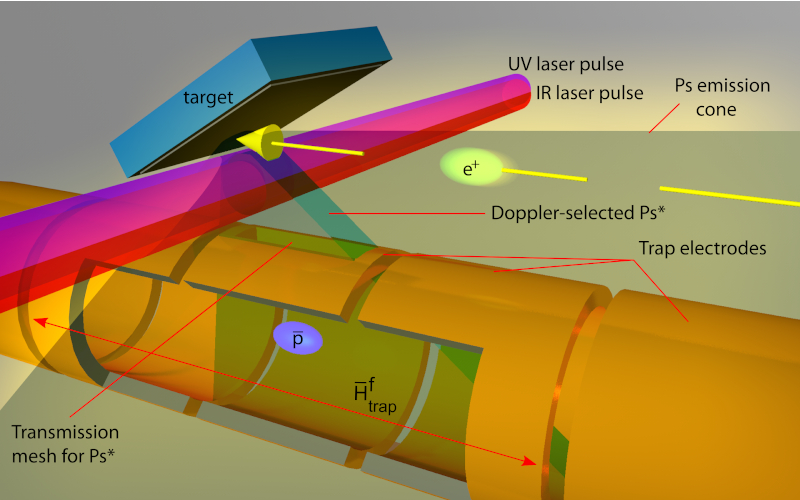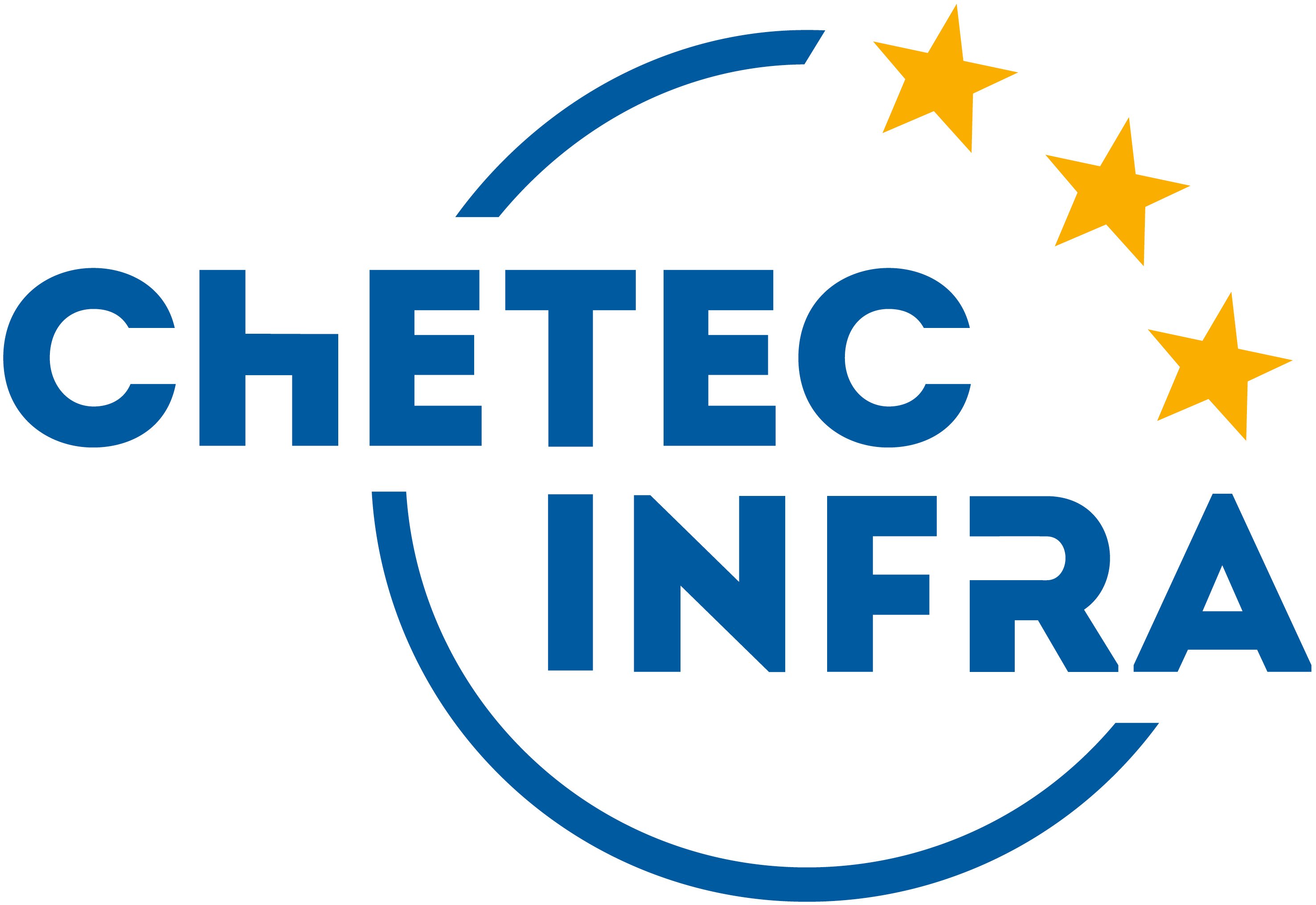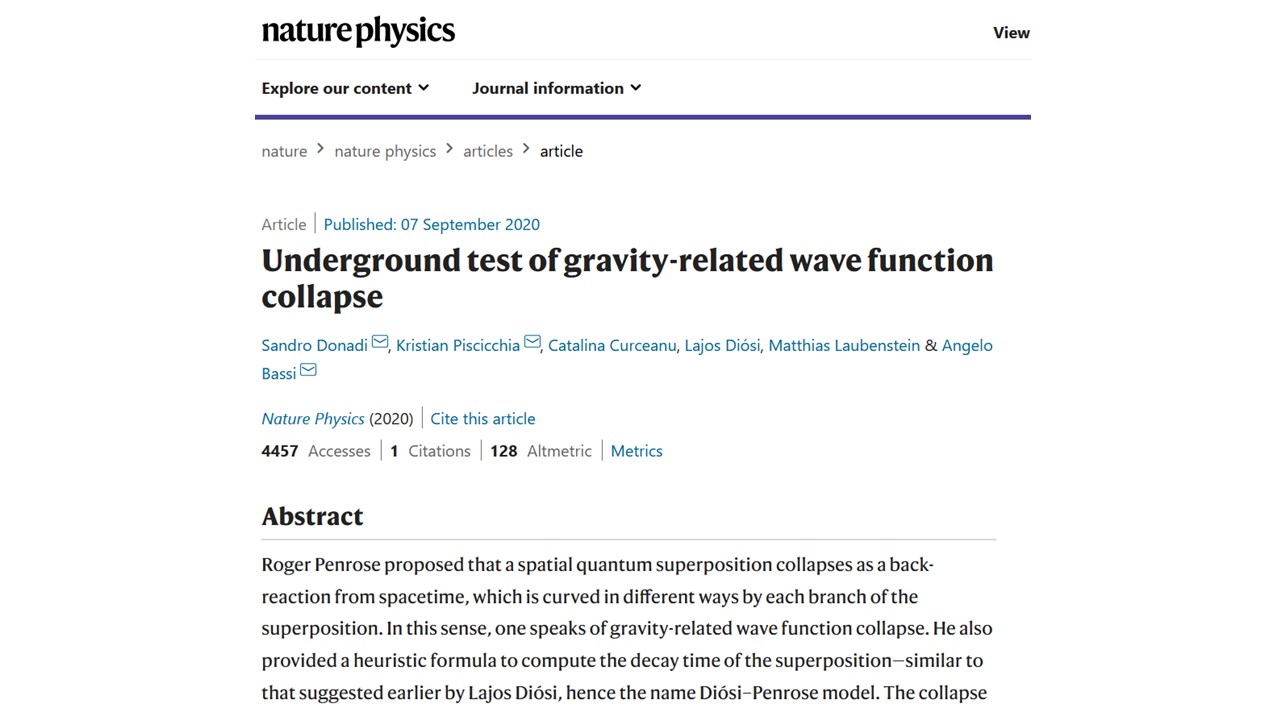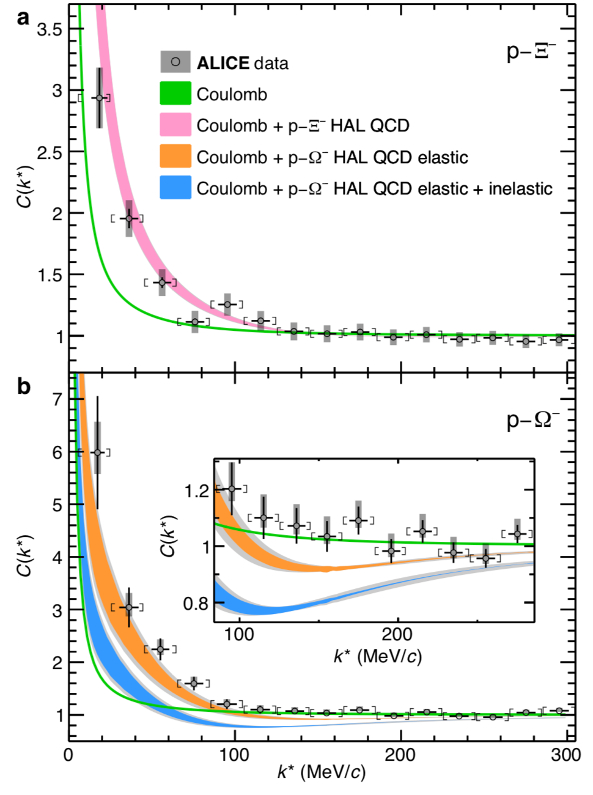Past news
Pulsed production of antihydrogen
Pulsed production of antihydrogen
Cold antihydrogen atoms (with K or sub-K temperature) are a powerful tool to precisely probe the validity of fundamental physics laws. The design of highly sensitive experiments needs antihydrogen with controllable and well defined conditions: energy, position, quantum number and time of the production. The paper of the AEgIS collaboration "Pulsed production of antihydrogen" published on 8 Feb. 2021 on Communications Physics (https://www.nature.com/articles/s42005-020-00494-z) presents experimental results on the production of antihydrogen in a pulsed mode in which the time when 90% of the atoms are produced is known with an uncertainty of ~250 ns, about 1000 times more accurate than previously attained. This is the first time in which we know when the antihydrogen atoms are produced. Previous experimentally demonstrated schemes of H¯ production did not allow tagging the time of the formation with accuracy.
The results are based on the data collected at CERN during the 2018 with antiprotons delivered by the Antiproton Decelerator.
The pulsed source is generated by the charge-exchange reaction between Rydberg positronium atoms—produced via the injection of a pulsed positron beam into a nanochanneled Si target, and excited by laser pulses—and antiprotons, trapped, cooled and manipulated in electromagnetic traps (see figure).
The results have been obtained during the last year of data taking with antiproton at CERN in 2018. They mark a milestone in the field of trapping, manipulating and detecting charged particles, producing and exciting positronium and forming and detecting antihydrogen.
The number of observed events is 79, while only 33.4 ± 4.6 events are expected under the hypothesis of absence of antihydrogen formation and the probability that the observation is not antihydrogen is then only about 1 in 3.5 million.
The agreement between the observed and expected number of antihydrogen allows predicting that a significantly larger (by some orders of magnitude) flux of anti-atoms will be available in an optimized experimental geometry and with an increased number of antiprotons and positronium atoms.
The result is then a major landmark in the first phase of the AEgIS experiment aiming, on the long term, to perform direct measurements of the validity of the Weak Equivalence Principle for antimatter.

SNAQs [snacks] – Schools on Nuclear Astrophysics Questions
SNAQs [snacks] – Schools on Nuclear Astrophysics Questions
A new format of virtual nuclear astrophysics schools
SNAQs [snacks] – Schools on Nuclear Astrophysics Questions aims to give all students and young researchers the same, multidisciplinary knowledge about nuclear astrophysics in a period of limited “live” schools or conferences due to the pandemy. SNAQs will support this idea and strengthen the community of schools by providing a frequent lecture series to train and educate the next generation of scientist.
SNAQs will join the community of existing schools related to nuclear astrophysics that will partner with ChETEC-INFRA:
Carpathian Summer School of Physics (well established)
European Summer School on Experimental Nuclear Astrophysics (well established)
Russbach School on Nuclear Astrophysics (well established)
Those infrastructures will be networked by ChETEC-INFRA, Chemical Elements as Tracers of the Evolution of the Cosmos – INFRAstructures for Nuclear Astrophysics, a new European network of 32 partner institutions.
The kick-off event of SNAQs will discuss
What do we need to know about Nuclear Astrophysics?
and will take place on Wednesday, February 17, 2021, 14:00 – 17:30 CET (08:00 – 11:30 EST). We are very glad that following colleagues agreed to give lectures:
Aurora Tumino (Università degli Studi di Enna Kore) Chris Sneden (University of Texas)
Jordi Jose (Universitat Politècnica de Catalunya)
After registration at https://hifis-events.hzdr.de/e/snaqs-feb2021 you will get a confirmation e-mail with a ZOOM link that will allow you to join the virtual school from about 13:45 CET (07:45 EST) on February 17.
The organizing committee: Konrad Schmidt (HZDR),Marcel Heine (CNRS-IPHC), Andreas Korn (UU), Arunas Kucinskas (VU), Mohamad Moukaddam (CNRS-IPHC), Rosario Gianluca Pizzone (INFN-LNS), Olivier Sorlin (CNRS-GANIL), Livius Trache (IFIN-HH)

Gravitational-related collapse Nature Physics paper in the Top 10 list of two important science web-sites
Gravitational-related collapse Nature Physics paper in the Top 10 list of two important science web-sites
The article recently published in nature Physics, Donadi, S., Piscicchia, K., Curceanu, C. et al.: Underground test of gravity-related wave function collapse. Nat. Phys. (2020). https://doi.org/10.1038/s41567-020-1008-4, which presents a new record in the studies of gravity related collapse models of the wave function, proposed by Lajos Diósi and Roger Penrose (the so-called DP model) aiming to solve the famous measurement problem, realized with an experimental research in the framework of the Vip collaboration, with Spokesperson Catalina Curceanu and INFN Responsible Kristian Piscicchia, has obtained a very rewarding record: it was selected among Top 10 scientific research achievements, in all research fieldsm by two prestigious scientific web-sites:
1) “Our favorite science news stories of 2020 (nonCOVID-19 edition)” by:
Science - sciencemag.org (where the research is at number 2, immediately after a research on virus):
https://www.sciencemag.org/news/2020/12/our-favorite-science-news-stories-2020-non-covid-19-edition
2) and “Les 10 articles que vous avez préférés en 2020”, by puorlascience.fr, where the research is number 9:
https://www.pourlascience.fr/sr/actualites/les-10-articles-que-vous-avez-preferes-en-2020-20609.php
This achievement shows once again how much this type of research, on the foundations of quantum theory, is actual and of great interest not, only for physicists.
The VIP collaboration is currently proceeding with optimizations both of the experimental apparatus and, in collaboration with theorists, including the recent Nobel laureate Sir Roger Penrose, to further theoretical refinements for the verification of models in which quantum theory and gravity are intertwine within the collapse models.

The ALICE experiment measures the interaction between protons and multi-strange baryons
The ALICE experiment measures the interaction between protons and multi-strange baryons
The measurement of the interaction between protons and “hyperons” improves our knowledge of the strong interaction and it will contribute to the understanding of the structure of neutron stars.
A precise measurement of the strong nuclear force, responsible of the interaction between hadrons, allows us to confirm the expectations of the Quantum Chromodynamics (QCD), which is the theory describing the strong interaction, and to study a frontier topic of nuclear physics: the mechanism that determines the formation of “exotic” states of matter, like those that could exist in the core of neutron stars.
As described in an article just published on Nature (https://www.nature.com/articles/s41586-020-3001-6), the ALICE collaboration developed and applied a new method to measure this interaction by means of the hadrons produced in proton-proton collisions at the CERN Large Hadron Collider (LHC). The measurement was indeed feasible thanks to the specific characteristics of the experiment, in which INFN plays a pivotal role.
The strong nuclear force, carried by gluons, is not only responsible of binding together protons and neutrons within the atomic nuclei, but it determines the interaction between hadrons that contain less common quark flavours. Hyperons belong to this family of hadrons: they are baryons containing one or more strange quarks, which are not present in the atomic nuclei, hence in the ordinary matter, but that could exist in neutron stars.
Because of the instability of hyperons it has been difficult, if not impossible, to achieve an experimental validation of the QCD calculations for what concerns this aspect of the strong interaction. ALICE employed a technique named femtoscopy, because it addresses phenomena at the femtometre (10-15 m) scale, which is about the size of a hadron and the range of the strong interaction. Femtoscopy is based on the quantum mechanical principle that links the momentum difference between two particles to their distance when interacting at short-range. The application of this technique to LHC collisions allowed the ALICE collaboration to measure for the first time the attractive force due to the strong interaction existing between a proton and the heaviest hyperon, consisting of three strange quarks: the Ω particle.
According to Andrea Dainese, Physics Coordinator of ALICE, and researcher of the INFN unit in Padova “The results reported in this article are an important milestone and also a starting point to explore with ALICE this domain of the strong interaction. They confirm the versatility of an experiment designed to study the Quark Gluon Plasma in heavy-ion collisions at the LHC, but now evolved in a tool able to unveil several other aspects of the quantum chromodynamics”.
An additional fascinating application of the method described in the article published on Nature concerns the understanding of the state of matter constituting the core of neutron stars. Because of the high pressure inside these stars, hyperons may be formed thanks to the fact that strange quark production is energetically favoured in these extreme conditions. The future measurements of the interaction between ordinary (protons) and strange (hyperons) matter by means of femtoscopy represent essential elements to determine the equations of state of the matter in the neutron stars and to predict their time evolution.
The effectiveness of this new analysis technique and the precision of the measurements rely on the excellent performance of the ALICE detectors, which are able to identify the particles produced in the proton-proton collisions at the LHC and to measure both their momenta and their decay products. According to Massimo Masera, University and INFN of Torino, coordinator of the Italian groups in ALICE “INFN played an essential role in designing and building the Inner Tracking System, which is used to detect the hyperon decays, and one of the largest detector in ALICE, the Time-Of-Flight detector, used to identify charge particles”.

Momentum correlation functions measured by ALICE for p-Ξ (a) e p-Ω (b) pairs. A correlation value above unity for momentum differences (k*) close to zero indicates an attractive interaction. The data are in excess with respect to the green curve representing the Coulombian interaction: this is consistent with a relevant attractive force, which is compared to the lattice QCD calculations.
ChETEC-INFRA: research infrastructures for Nuclear Astrophysics
ChETEC-INFRA: research infrastructures for Nuclear Astrophysics
A new European H2020 project where INFN takes on a central role
ChETEC-INFRA (Chemical Elements as Tracers of the Evolution of the Cosmos - Infrastructure) is a project recently funded by the EU with a four-year budget of 5 million euros, within Horizon 2020. INFN and other Italian universities hold a central role in the initiative that is located at the frontier of nuclear astrophysics that studies the origin of chemical elements: from the Big Bang, to stellar combustion up to neutron and proton capture processes for the formation of heavier elements.
ChETEC-INFRA constitutes a network between three types of infrastructures which, together, will provide the necessary tools for this research: the astro-nuclear laboratories that provide cross section data of nuclear reactions, the supercomputers that perform calculations of stellar structure and nucleosynthesis, and telescopes and mass spectrometers that collect data on the abundance of elements and isotopes.
ChETEC-INFRA will overcome existing barriers to the advancement of these studies: in particular, access to nuclear astrophysics research infrastructures will be unified using a new integrated web portal; targets and detectors for nuclear reactions, software tools for open-source nucleosynthesis and new three-dimensional models for the analysis of stellar spectra will be developed.
ChETEC-INFRA will provide the community with the tools needed to address key issues on solar fusion, nucleosynthesis by neutron capture and explosive stellar processes. In a combined approach designed to facilitate and increase accessibility, synergies and training, the large amount of transnational access provided will make it possible projects that exploit at least two different types of infrastructure.
Within ChETEC-INFRA, the data will be archived and cataloged for long-term sustainability beyond the end of the project and for their usability in open access.
ChETEC-INFRA involves 32 institutions from 18 European nations and is networked with nuclear astrophysics communities in the United States, China and Japan.
INFN contribution to the project, through its own structures and employees and associates, is broad and widespread.
In particular, INFN will be responsible for the development, construction and testing of both solid and gaseous innovative targets, which will allow the study of nuclear reactions of astrophysical interest at very low energies. Furthermore, it will deal with the development of innovative neutron detectors, such as composite scintillators and new plastic materials, for gamma/neutron discrimination, keeping in touch with industrial partners.
INFN will coordinate the validation activities of the cross sections of the most important reactions for nuclear astrophysics such as those involving 12C and 22Ne, possibly measuring the same reactions with complementary methods, and more generally it will establish and maintain an open-access database of cross sections for a large number of reactions of astrophysical interest.
Finally, INFN will play an important role both in the dissemination of research results with particular reference to funding institutions and industries, and in the training of the next generations of researchers in the field of nuclear astrophysics, through schools and masterclasses.
